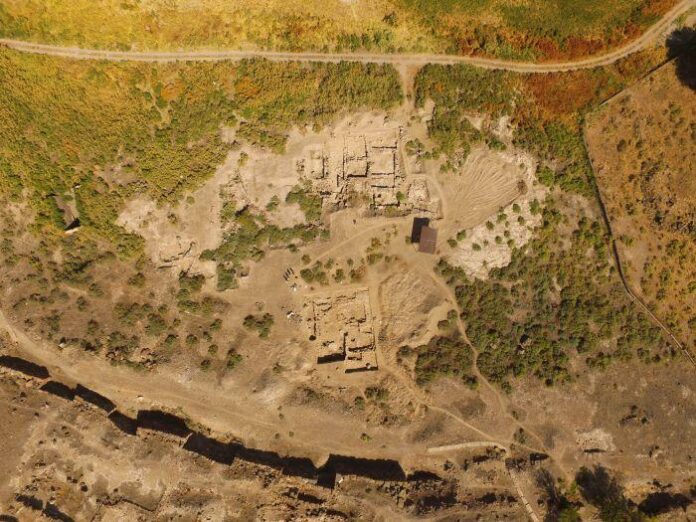For ten years now, a team of Polish and Armenian archaeologists has been excavating at Metsamor—a sprawling ancient city erected in 4,000 B.C.E. about 20 miles south of the Armenian capitol. This spring, they stumbled upon a “Golden Tomb” filled with stunning jewels and artifacts. Now, researchers have encountered something even more surprising—a structure they believe is a bygone bakery, based on traces of flour found at the site which was at some point destroyed in a fire.
Archaeologists began the excavation to learn more about the giant, walled settlement’s legacy during the Urartu Kingdom of the Iron Age. Focusing on the architectural remains of a burned building that was in use in the Lower City from around 1200–1000 B.C.E, they identified “two rows of a total of 18 wooden columns supporting a reed roof with wooden beams,” according to a release by Poland’s Science for Society. All that remained were the stone bases from the building’s columns, and singed fragments of its beams and roofing. While the structure was originally constructed to serve as storage, researchers say there is evidence that several furnaces were added later.

Flour spotted from above at Metsamor. Photo by Patryk Okrajek
Within those collapsed remnants, the team spotted a wide, inch-thick coating of white dust. At first they assumed it was ash, but under the leadership of Professor Kryzstztof Jakubiak, the team used a floatation process to wet the mystery powder and determine its true makeup. “This gave a chance to select a big portion of organic material which was decoded and recognized as remains of wheat flour,” Jakubiak told Artnet News. “The samples were examined by an archaeobotanist expert, who confirmed this preliminary supposition.”
Though the flour that was found isn’t edible at this point, long ago the site once held 7,000 pounds of the staple ingredient, pointing to a bakery built for mass production. Archaeologists have discovered similar bakeries around the region, but as Jakubiak noted in the official release, Metsamor’s is now one of the oldest found in the southern and eastern Caucasus. What’s more, Transcaucasia cultures sometimes used flour for divination—opening further questions for next season’s researchers to uncover at the site, when the rooms adjacent to the ancient bakery will be explored.

























